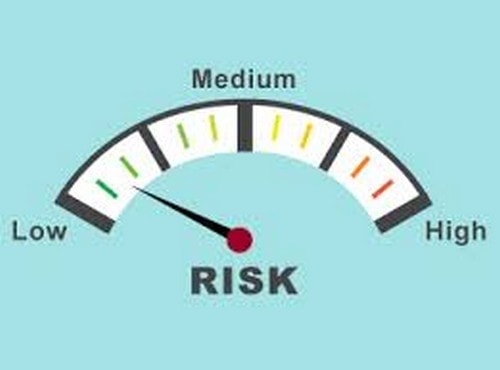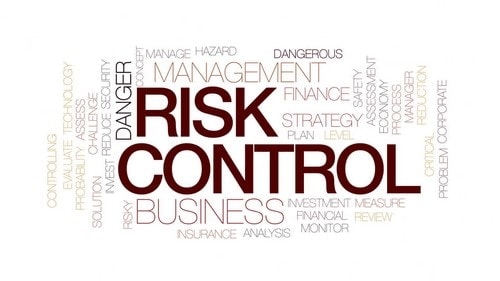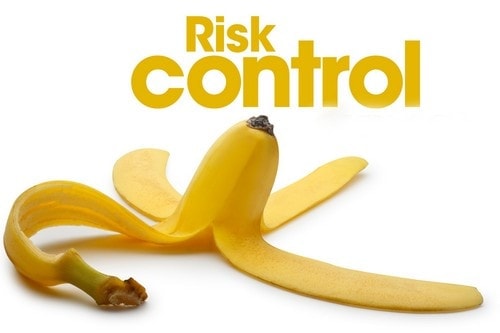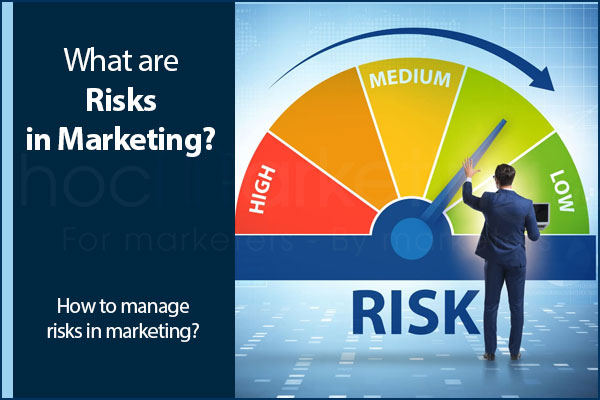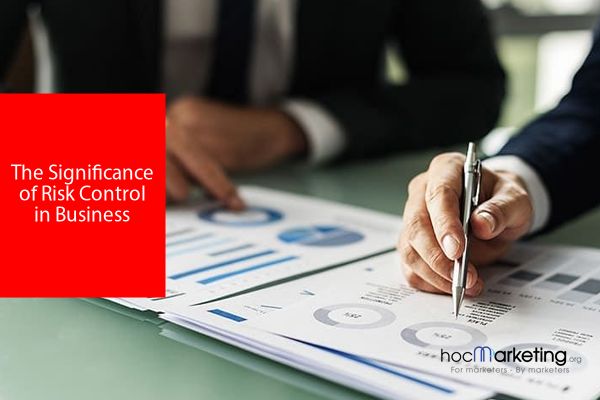
The Significance of Risk Control in Business

Risk control is the process of identifying, analyzing, and mitigating potential risks that could adversely affect a business It involves taking proactive measures to prevent or minimize the impact of undesirable events Effective risk control helps firms operate more efficiently, protect their assets, and maintain a competitive advantage in the market
Exposure to potential losses or harm defines risk. It arises from unfavorable or undesirable events. To mitigate such risks, companies employ risk control methods. This enables them to identify, evaluate and develop strategies to minimize or eliminate potential losses. Risk control techniques are applied to both technical and non-technical aspects of a company's operations. Through risk assessment, companies can evaluate their assets, loans and investments to identify potential losses. This is an essential process in determining the value of an investment and developing strategies to reduce risks.
Risk management involves the strategic coordination of activities and allocation of resources to mitigate the negative effects of unpredictable events. Its primary goal is to safeguard a company's assets, profits, liabilities, and personnel with optimal efficiency and minimal expense.
What are the risks?
Risk and uncertainty are ubiquitous features of our environment that cannot be ignored. It is not only the foundation of insurance, but also an integral part of our daily lives. Everyone faces risk in various forms, which can result in loss or misfortune. These risks may be greater or lesser, but they are inevitable and can manifest in many ways, such as loss of life, property, health, theft, or accidents.
The classification of risks is based on the type of problems and consequences they entail. Pure risk is one such type where the possibility of loss exists, and uncertainty lies in the when, where, and how of the occurrence. It is often associated with unfortunate events that cause damage or harm and can be mitigated by insurance.
ii) Speculative risk refers to the possibility of loss, gain, or break even resulting from a particular event. This type of risk cannot be protected by insurance and is usually managed through diversification.
iii) Fundamental risk, on the other hand, affects society as a whole and is often impersonal. It can impact a particular group or section of people, and is typically beyond the control of individuals. Examples of fundamental risks include earthquakes, typhoons, and windstorms.
Fragment 6 rewritten:
Peculiar risks refer to those that result from an individual's decision and actions, and their causes and consequences are specific to that person. Despite their personal nature, these risks can still be insured. For instance, owning a car or building a house may come with unique risks that are specific to the individual, but they can still be covered by insurance.
What is Risk control?
Assessing the assets of a company is the initial step for effective risk control. From there, the company can determine the most effective methods to minimize losses. While it may be difficult to completely avoid losses, implementing loss prevention strategies can significantly reduce the impact. Insurance is one such strategy, where a third party is contracted to balance any losses incurred. The ultimate goal is always to minimize the damage as much as possible.
The assets are strategically separated to evenly distribute risk and prevent a single threat from impacting multiple business locations simultaneously. Consolidating assets in one location increases the likelihood of risk, hence the distribution strategy. Additionally, risk control includes implementing duplication measures such as backup servers to ensure uninterrupted operations in the event of system failure.
Apart from efficient resource management, the firm diversifies its lines of business, providing a range of products and services. This approach ensures that a loss in one line does not have a significant impact on the overall profitability of the firm.
Examples of Risk Control Actions
Proactive measures are taken to mitigate infrastructure risks through regular inspections. One such measure is ensuring equipment used in production is properly maintained to prevent equipment failure, which could pose a significant risk to the firm. Additionally, credit risk is mitigated by meticulously validating credit applications to provide clients with due diligence. In financial trading, risk control is achieved through system validation, which minimizes the potential for human error. Further, machines are programmed to automatically shut down in the presence of errors, reducing safety risks.
Employees are required to wear safety gear to minimize safety hazards in the workplace. Projects are subject to review and approval for any necessary changes, allowing for adaptability and improvement.
In the event of any issues, the risks are effectively managed through escalation and the necessary decision-making processes.
How does risk control help a firm?
Effective risk control has become a crucial aspect of modern business operations. By anticipating potential risks, organizations can proactively prepare for crisis situations and minimize their impact. This discipline emphasizes the importance of planning ahead and staying vigilant to potential issues, enabling businesses to stay one step ahead of potential threats.
To implement effective risk control, it is important to identify the potential impact of business decisions and projects, consider multiple viewpoints, and develop comprehensive solutions to address any challenges that may arise. By taking a thoughtful and thorough approach to risk control, businesses can more effectively navigate any obstacles and ensure long-term success.
By implementing the plans that have been discussed, the company is able to effectively manage risks and prevent conflicts of interest. As a result of this proactive approach, the risks that need to be addressed are minimized, allowing for quicker policy changes within the organization. Through increased awareness and successful analysis, the company is able to learn and improve its risk management strategies, leading to better performance and increased productivity while also saving time and costs.
By addressing and solving complex problems, new avenues for growth and success present themselves. In addition, the experience gained from analyzing real balance sheets promotes a culture of risk management, which is invaluable for future endeavors. This not only leads to a more prepared and knowledgeable team, but also provides the firm with a competitive edge and sustained earnings.
What damages are caused by the process of risk control?
Effective risk management is crucial for the success of any project, but it can be a time-consuming process. It involves complex calculations and analysis to identify potential risks and develop strategies for minimizing them. Unfortunately, the nature of risk management means that it is difficult to predict and control all possible outcomes. Failure to properly manage risks can lead to significant financial losses for the firm, as resources are diverted to cover losses and recover from setbacks. Because much of the information used in risk management comes from external sources, it can be challenging to maintain complete control over the process.
Implementing risk control measures is a time-consuming process that involves gathering information and devising strategies to mitigate potential risks. However, it is important to note that this process is subjective and may not always go as planned. Effective management of potential threats is crucial in order to reduce the level of risk and gain greater control over it. While every process has its limitations and benefits, risk control becomes especially important when a firm is focused on achieving specific results while also dealing with potential threats, damages, and vulnerabilities.
What is the Importance of Risk Control?
Effective risk control measures are essential for safeguarding an organization against accidents and injuries. By identifying, controlling, and reducing potential risks, these measures serve as a safety net that minimizes the likelihood of harm occurring.
In addition to mitigating risk, such measures offer numerous benefits to firms. By identifying at-risk employees and the factors that contribute to their vulnerability, organizations can take proactive steps to protect their workforce. Furthermore, understanding which risks can and cannot be eliminated enables organizations to develop targeted mitigation strategies and remain vigilant against potential threats.
Regularly reassessing risks and evaluating the effectiveness of control methods is crucial to minimizing accidents and injuries within an organization. Additionally, these planning measures ensure that legal obligations are met by identifying and addressing potential risks with appropriate safety measures. While eliminating risks altogether is ideal, it may not always be feasible, leading to the implementation of risk substitutions and isolations in order to prevent losses.
Risk control is a crucial procedure that enables companies to maintain maximum profitability and safeguard themselves against potential losses. By implementing effective risk management strategies, firms can ensure their continued success, meet their desired financial goals, and prevent potential losses from causing significant damage to their assets. Overall, risk control is an essential aspect of running a healthy and profitable organization.
